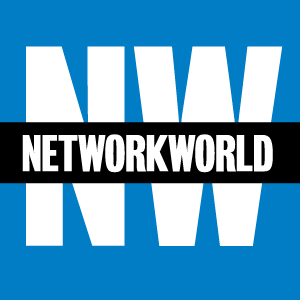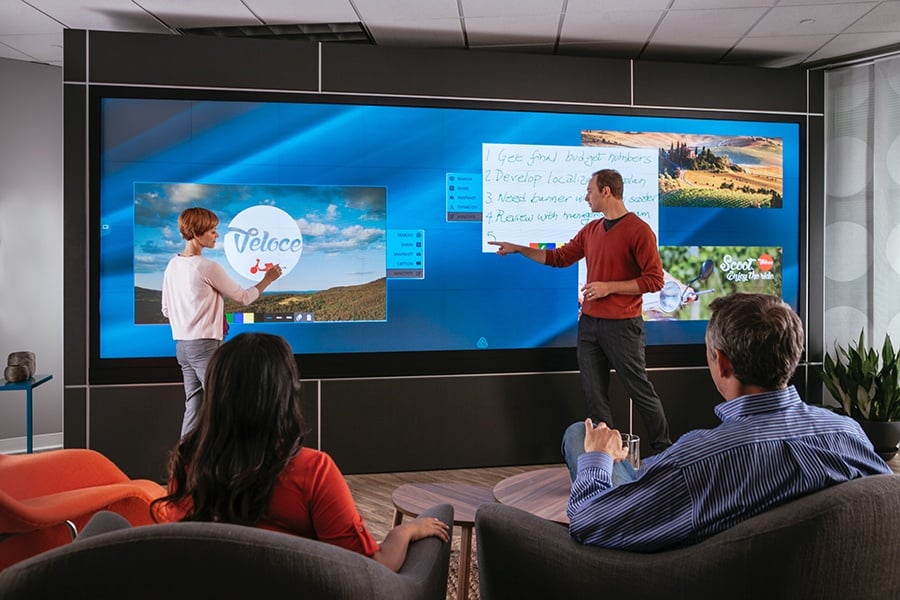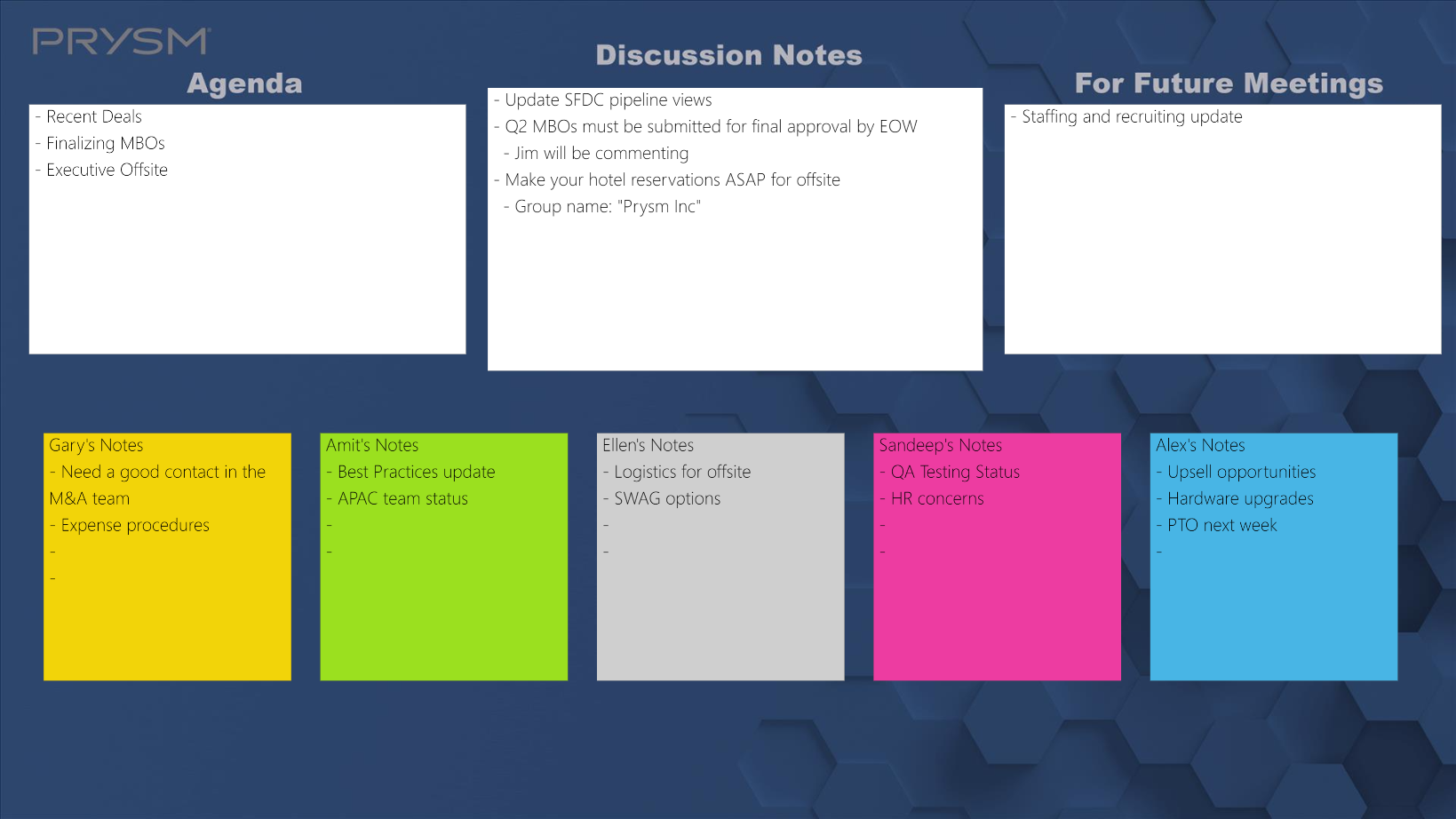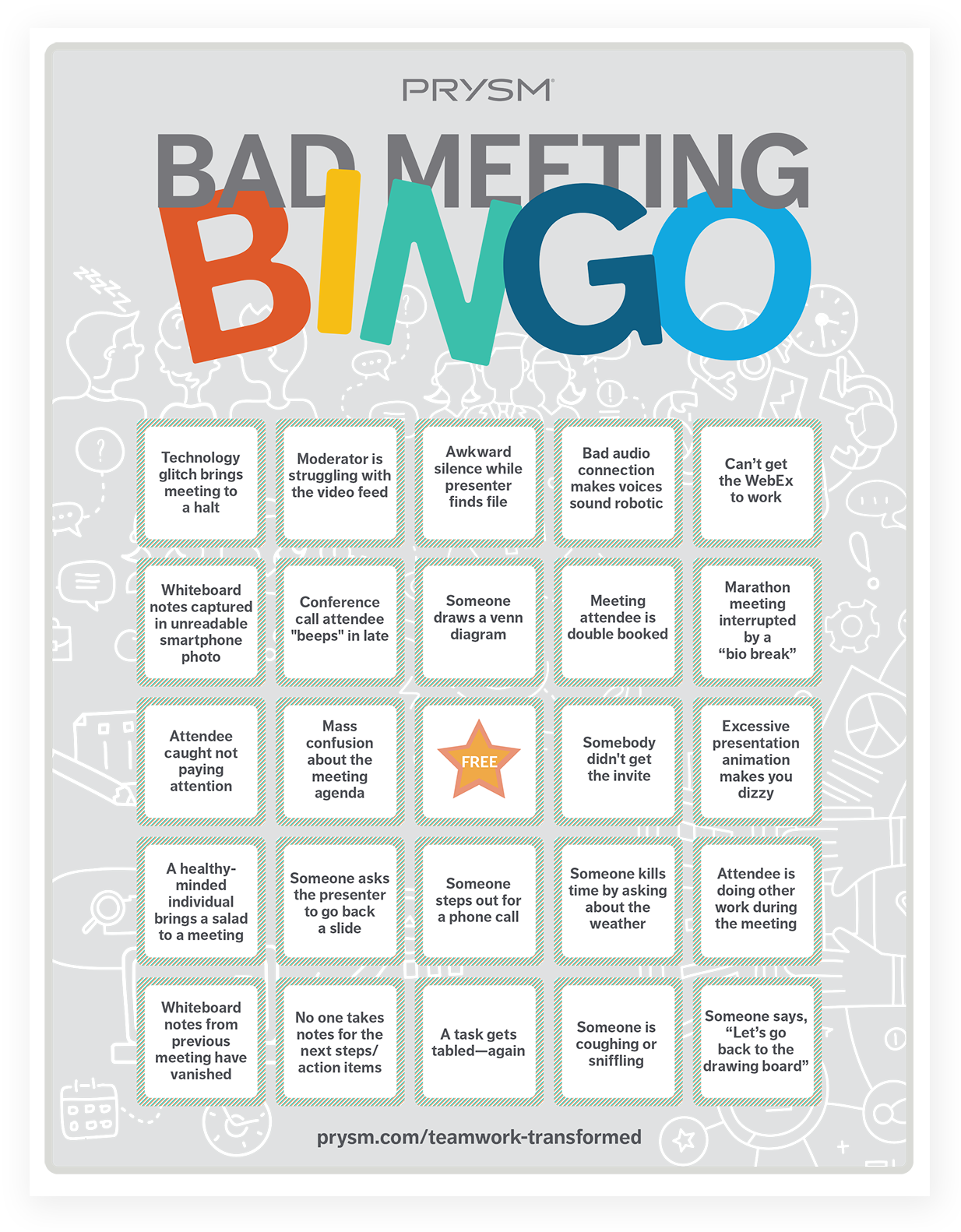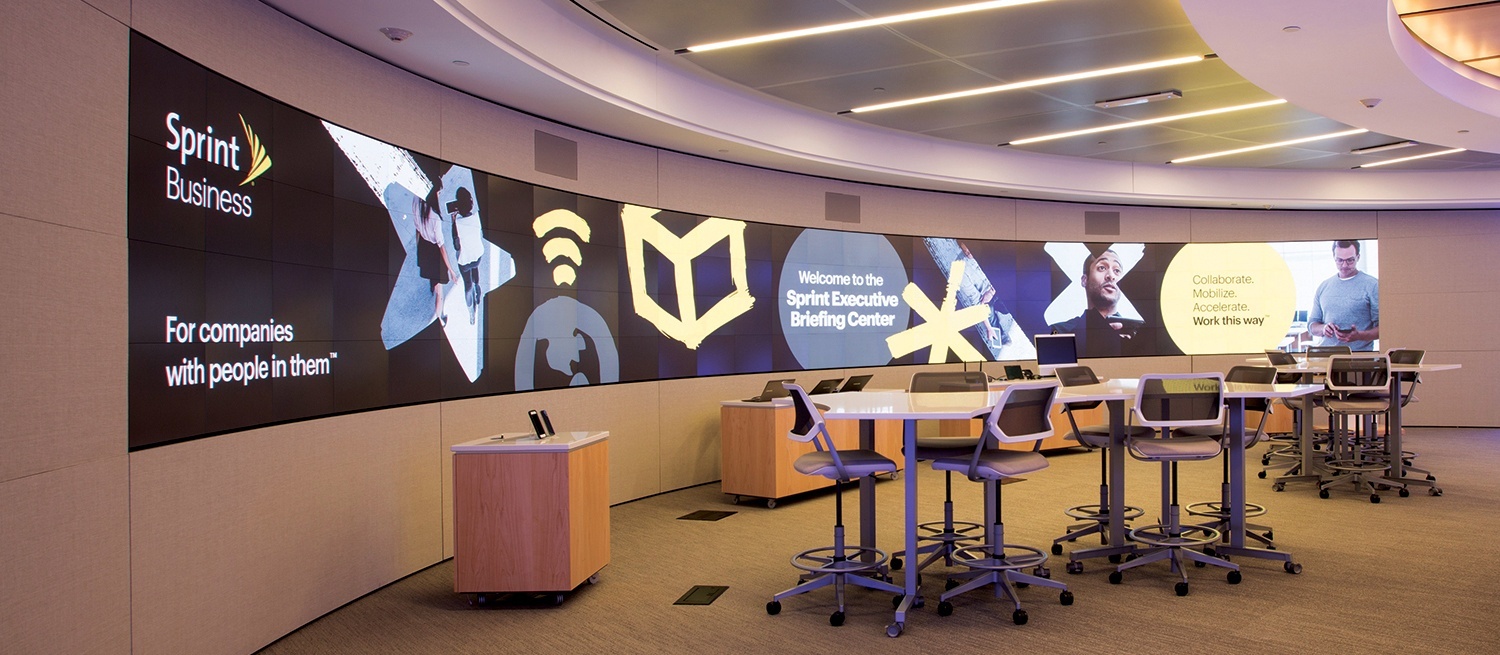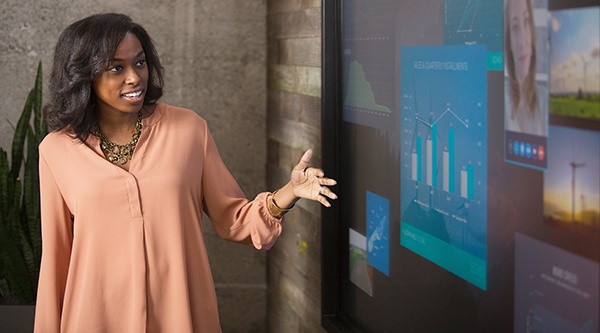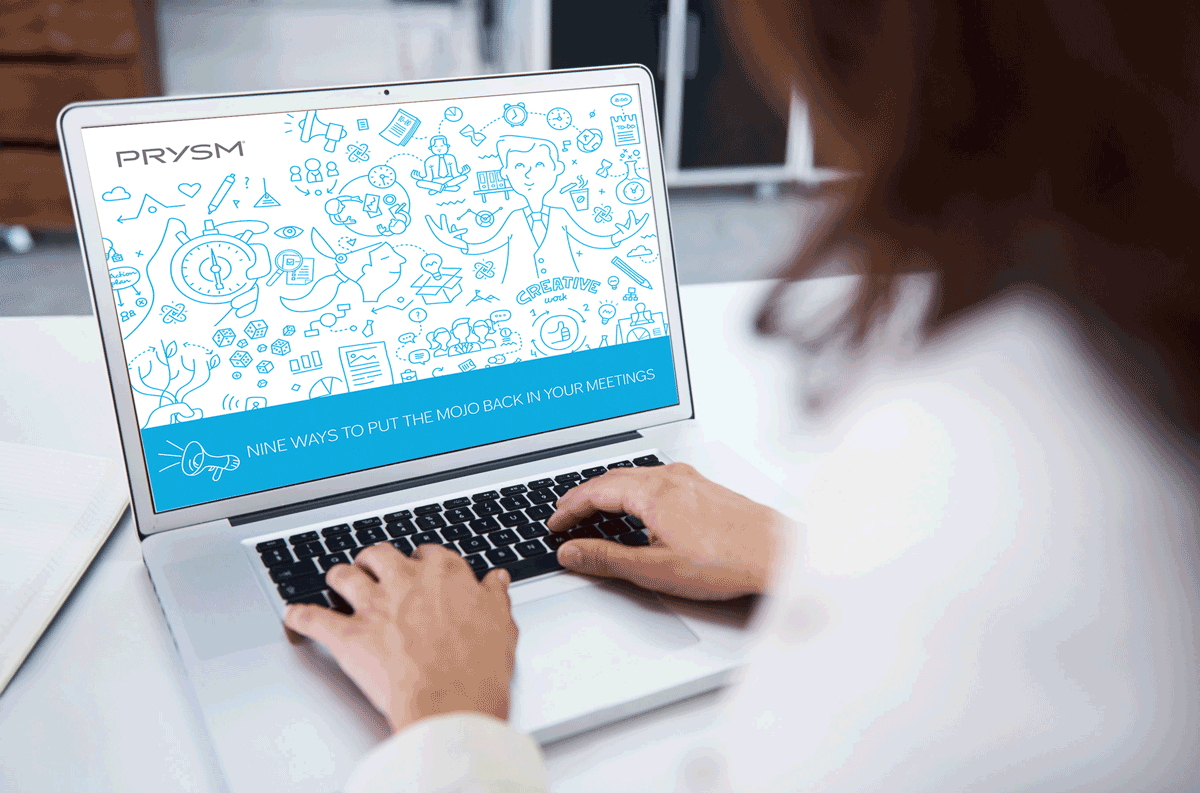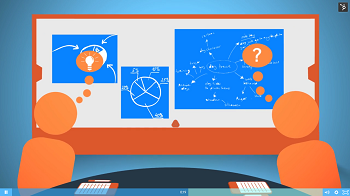I was talking to an "experience marketer" today (someone who designs flashy customer-experience centers for large companies, such as AT&T, Cisco, etc.) and he mentioned something about how strongly the environment influences a customer or prospect to buy. As a marketer myself, this is a phenomenon I'm well familiar with. The reason is simple: We don't just buy products or services. We buy the way they make us feel.
Remember scrambling like mad for new technology?
I know people who camped out overnight to secure their place in line for the latest version of a smartphone. Others significantly overpaid or added their names to pre-order lists months in advance — just to make sure they had the most up-to-date device.
Ten months ago, when I was interviewing for my job at Prysm, my future (now current) boss showed me the Prysm digital workplace platform. I remember her sketching on the digital whiteboard, calling up functions with a single touch from the hexagonal background, and using gestures to zoom in and out and move content around (like an iPad) on the massive 4K screen. It was impressive, to say the least. However (dirty little secret alert), I wasn't quite sure how useful it might be in day-to-day operations — outside of screen sharing in meetings with remote participants, which was something I could already do with Skype or Google Hangouts.
The other day, I heard a great story about how a colleague of mine got board approval to hire more than two dozen new staff members—and the whole negotiation took less than an hour. He used digital workplace technology to pull a remote team member into a board meeting on the fly and run ROI scenarios in real-time. Without being able to see the specific figures, the decision would have taken weeks and cost millions in potential revenue.
PowerPoint has become a mission-critical application — one that will not (and should not) be going away anytime soon. But while it’s the de rigueur standard for delivering presentations, PowerPoint was not built with collaboration in mind. As a result, developing presentations in concert with a team has some noteworthy challenges.
If you work for a company that has not yet embraced the work-at-home trend, don’t despair. By strategically demonstrating the benefits of remote work, you may be able to influence company policy.
When we talk about the gender/wage gap, we're most likely discussing how women and men with the same skills and experience should get paid the same salaries (inarguable). We usually attribute the gap to straight-up sexism, which is impossible to dispute. I know I've encountered plenty of that in the workplace.
Like most of us at Prysm, I'm passionate about our platform, and I use it every day. After a while, it's hard to imagine conducting certain activities — such as my biweekly team meetings — without it.
We had a great time with our April Fools' gag last week, in which we announced a futuristic (but fictional) creation called Prysm Avatar — a drone that would project your likeness as a 3D hologram, so you could make a virtual appearance in the office, while you worked from a remote location.
At Prysm, we’re always looking towards the future. By pushing the boundaries of science and technology, we help bring people together from anywhere in the world, enabling them to share content and ideas in new and exciting ways. We’ve dabbled in video conferencing, cloud-based file sharing, and mobile-anywhere connections. So what’s next?
Prysm has recently introduced some great new features, including live-source streaming, wireless screen sharing, and a Quick Start screen. With this new functionality, it's easier than ever to start a quick meeting, use Prysm's digital whiteboards and share content with colleagues.
How Collaboration Technologies Are Improving Process, Workflow and Business Performance
Contributed by Jay Cawog
Companies need their critical workforces to perform smarter, faster, and more productively. Achieving that goal requires embedding collaborative technologies deep into processes and incentivizing collaborative behaviors — ultimately transforming the workflow to turn knowledge into action. Collaboration platforms should do more than help employees talk about their work; they should create new ways for employees to do their work.
I was talking to one of our sales reps the other day, and he told me something very interesting: he frequently speaks with Prysm users who don’t know about some of our best features! (Reminds me of a guy I used to date, but that’s a story for another time.)
Because I’m passionate about our product, I thought I’d take a couple of minutes to highlight some of the cool features that you might not know about or that you might not be used to their fullest extent.
I had a chat the other day with an employee of a large, well-known tech company. She told me a story that really surprised me. She said that the meeting technology used at her company was so terrible that it was not only impacting productivity; it was actually making people hate their jobs.
“We picked Prysm, in part, because it reflected our brand in being very innovative.” —John Heiman, Director of Experiential Marketing, Sprint
Recently, Prysm published a case study about Sprint’s newly renovated executive-briefing center (EBC) at its headquarters in Overland, Kansas, featuring Prysm Visual Workplace. The telecom giant’s choice of technology was symbolic of a movement in today’s enterprise — the transformation of the traditional “dog-and-pony show” into a consultative sale requiring authentic collaboration.
Meetings 3.0: Five Ways to Turn Initial Presentations Into Real Sales and Customer Relationships
It's the hallmark of rookie sales reps — the rote PowerPoint presentation, delivered to every new customer and prospect with little to no variation in content and no time for discovery or feedback. The one-size-fits-all presentation is unlikely to come across as personalized or inspired and rarely leads to a sale. When you're trying to impress a prospect with your understanding of their business and commitment to their success, this is simply a poor strategy.
While I love people, I can be downright curmudgeonly when it comes to meetings. After all, I'm a w-r-i-t-e-r. My work is typically solitary. In my mind, every moment I'm in a meeting is a moment I'm not writing. And considering the (lack of) value I've derived from and contributed to the meetings I've attended over the considerable length of my career, it's no wonder that each new invite has me scrambling for reasons not to attend.
Video: Virtual Team Room
As a corporate blogger, I have had the privilege of spending time with many sales reps and execs, mining ideas and helping them put their own blogs together. It's great to hear about their thoughts, their vision, and their customer visits.
From those who are constantly on the road, I've also sometimes heard something less than wonderful — namely, that they are exhausted. They often spend way too much time away from their families, cooped up on airplanes, and sleeping in impersonal hotels.
Ever worked at a company that had an ample number of conference rooms — but when you'd go to reserve one, they were never available? You're definitely not alone. Until now, there was no way to safeguard scrum notes or protect confidential board-meeting information, except to lock the door.
Agile software development is an iterative approach that requires continuous team collaboration and a tight feedback loop. A 2015 survey of 601 software developers and IT professionals* revealed that the Agile methodology had achieved widespread adoption and had become the "new norm."

